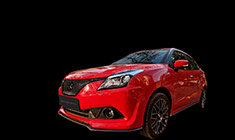News
Scale model of Soviet Union's Ilyushin IL-76MD and its history with IAF
The IL-76MD was named Gajraj (Elephant King) in the Indian Air Force, and a total of 17 units were acquired.
BHPian skanchan95 recently shared this with other enthusiasts:
1:200 Ilyushin IL-76MD Candid-B/Gajraj KI2878 "G", No. 44 Squadron "Mighty Jets", Indian Air Force, Chandigarh AFS
The Ilyushin IL-76MD (NATO reporting name: Candid-B) is a multi-purpose, fixed-wing, four-engine turbofan military strategic airlifter designed by the Soviet Union's Ilyushin design bureau in 1967, to replace the Antonov An-12.
The IL-76MD was the "military" transport variant of the IL-76 and was equipped for troop transport and paratroop dropping, with a row of fold-down seats along each side of the cargo bay. A double row of seats could also be easily installed down the center of the cargo bay, and for troop transport, an upper deck with seats could be installed as well. Up to 140 troops or 125 paratroopers could be carried. For paradrops, the cargo bay was depressurized while the cockpit remained pressurized; the jump alarm system was so loud and obnoxious that paratroopers said they were eager to jump out.
The defensive armament of the IL-76MD consisted of a prominent UKU-9K-502-1 manned tail turret, where "UKU" stood for "unifitseerovannaya kormovaya ustanovka (standardized tail installation)". This designation was derived from the fact that exactly the same tail turret was fitted to the Tupolev Tu-95 "Bear" and Tu-22M "Backfire" bombers. The turret's "sting" consisted of twin Gryazev-Shipunov GSh-23 twin-barreled 23-millimeter cannon. The GSh-23 was an ingenious weapon, the two barrels of each cannon being arranged in a "teeter-totter" fashion so that the firing of one barrel hinged the other barrel forward to be loaded and fired in turn. The effect was a very high rate of fire, with a cyclic rate of 3,600 rounds per minute.
A PRS-4 Krypton fire-control radar was fitted under the rudder to guide the cannon. Although such defensive armament might have seemed futile, with a fighter armed with air-to-air missiles (AAM) able to easily stand off out of range of the cannon and blow the IL-76 out of the sky, the cannon also amounted to a countermeasures system, since it could fire chaff and flare rounds to confuse AAMs. The gunner sat in his own pressurized compartment, generally entering through a door in the rear cargo bay bulkhead. If he needed to bail out, there was a hydraulically-operated escape hatch on the right side.
The IL-76MD, aside from the tail gun turret, was generally similar to the "civilian" IL-76TD, with the uprated D-30KP-2 turbofans. The IL-76MD had provisions for fitting defensive chaff-flare dispensers to the rear fuselage. Two stores pylons could be fitted to each outer wing, for a total of four pylons, each of which could handle a 500-kilogram (1,100-pound) load. The pylons were rarely attached; it was troublesome to fit them, since they were heavy and had to be held up by ground crewmen standing on ladders. Il-76 crews occasionally performed practice drops of leaflet canisters, but that's about as much use as was ever made of the pylons.
Demilitarized IL-76M/MDs, with the tail guns and other combat-related gear yanked, sometimes ended up in commercial service. Oddly, some IL-76T/TDs were observed with markings identifying them as Il-76M/MDs despite the lack of a tail turret, while some IL-76M/MDs were observed similarly marked as IL-76T/TDs despite being fitted with the tail turret. These machines were sometimes referred to as "Falsies".
The Indian Air Force & the IL-76

In 1961, the IAF had inducted its first large transport aircraft - the Antonov An-12 from the Soviet Union. Two IAF squadrons were equipped with the An-12 - No. 44 "Mighty Jets"(Then known as "Mountain Geese") & No. 25 "Himalayan Eagles". While the An-12s did a stellar job with the IAF as a transport aircraft by maintaining the Himalayan air bridge for over two decades while also participating in the 1971 war in the bomber role, by the early 1980s, it was evident that the An-12s were to be replaced soon as they were getting obsolete.
As a result, the IAF had formulated its Heavy Tactical Transport Aircraft (HETAC) requirement. But the options available were limited - the Americans would not sell anything remotely similar to India(C-130/C-141), and the Russian IL-76 seemed to be the only option available. The IAF evaluated the IL-76 in Feb 1982 under the leadership of the legendary Gp Capt Ajit Singh Lamba, Vr.C (later AVM - after whom the HAL Ajeet was named) and the aircraft was selected as the An-12's replacement.
Powered by Four Soloviev D-30KP-2 turbofans for improved hot & high take off performance, the IL-76MDs for the IAF retained the tail gunner station. The first IL-76s started arriving in India in March 1985. No. 44 Squadron was re-formed on the IL-76 under the command of Wg Cdr Ashok Goel and it became an IL-76-only squadron. No. 25 Squadron continued to operate An-12 before receiving Il-76s. The An-12s continued to operate alongside IL-76s for a short time before the An-12s of the squadron were replaced by An-32s, thus making No. 25 Squadron a composite squadron flying the An-32 and IL-76 together. In 2011, No.25 squadron relinquished its IL-76s and became an An-32 squadron. No. 44 Squadron is the sole IL-76MD squadron in the IAF.
The IL-76MD was named Gajraj(Elephant King) in the IAF. A Total of 17 IL-76MDs were acquired by the IAF (Serial nos. K2661, K2662, K2663, K2664, K2665, K2666, K2878, K2879, K2901, K2902, K2999, K3000, K3012,K3013,K3014, K3077 & K3078).
Within three years of induction, IAF IL-76s went into action and became the mainstay for inducting the Indian Army's IPKF forces into Northern Sri Lanka. The IL-76s also flew in BMPs, T-72s, fuel trucks and other equipment to sustain IPKF operations in Sri Lanka. The IL-76s also took part in operations to prevent the coup in the Maldives (Operation Cactus).
Later, as part of some overhaul/upgrades, these tail gunner station was removed on some IL-76s and externally, these aircraft started looking like civilian IL-76TDs(lack of tail gunner station). Later IL-76s were re-serialled in the KI- series. For e.g. IL-76 K2878 became KI2878(like the one depicted in the model).
The IL-76s continue to soldier alongside the IAF's C-17s as the IAF's heavy transport aircraft.
K2878 in its delivery scheme with tail gun turret

Re-serialed "Upgraded" KI2878 "Falsie" with tail gun turret missing

Specifications
- Origin: Russia
- Type: Heavy Transport Aircraft.
- Crew: Two pilots, One Navigator, One Flight Engineer
- Weights: Empty – 75,000 kg (1,65,347 lbs.) and MTOW – 1,70,000 kg (3,74,786 lbs.)
- Engines: Four Soloviev D-30KP-2 turbofans (26,455 lbf thrust)
- Speed: Maximum – 459 knots (528 mph; 850 km/h) at 11,000 meters (36,090 feet)
- Max. cruising speed : 432 knots (497 mph; 800 km/h)
- Range: 4,400 km (2,700 mi, 2,400 nmi) Il-76MD/TD with 52,000 kg (115,000 lb) payload.
- Ferry range: 9,300 km (5,800 mi, 5,000 nmi) Il-76MD-90A with no payload.
- Service ceiling: 13,000 m (43,000 ft)
- Thrust/weight ratio: 0.252
- Minimum landing run: 450 m (1,480 ft) with thrust reversers.
- Capacity/Payload: 225 paratroopers or 40 tons of freight, wheeled or tracked armoured vehicles, etc.
- Avionics: Search/Weather Radar
- Armament: Twin 23mm cannons in radar-directed manned turret at base of tail (removed in Upgraded and re-serialled IL-76MDs)
- Self Defence: ECM – Flare/Chaff Dispenser





















Check out BHPian comments for more insights and information.






















_0_0.jpeg)



